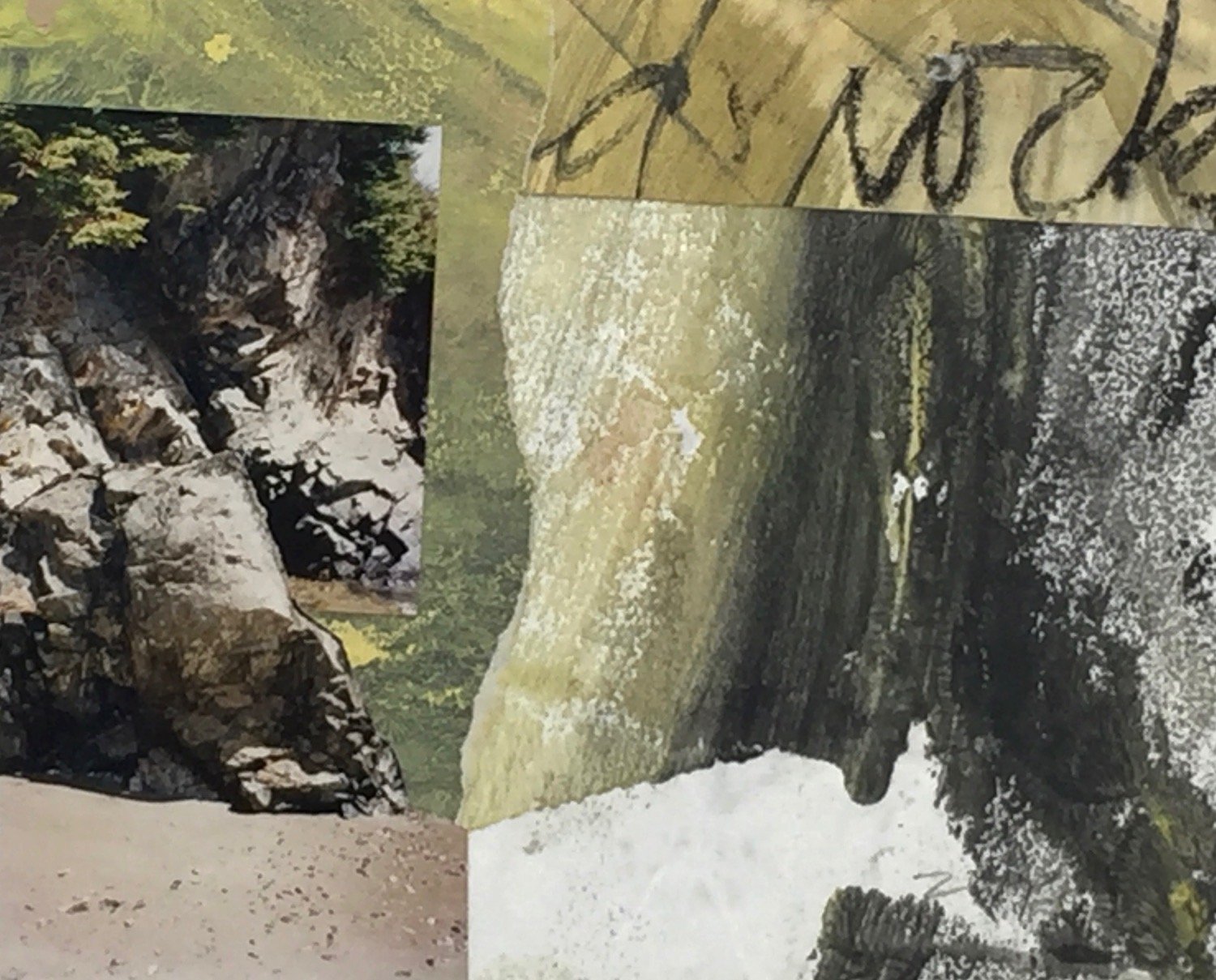Conversations Across Time: Early Work
Seeing chives greening up and buds getting ready to leaf out has me thinking about past springs, when I first came to Maine, and that spring after I moved from Belfast to Lincolnville. Time -- as they say -- marches on, and since it's been more than 30 years that I first walked Lincolnville Beach and really doubled down on painting, I've decided to devote this newsletter to a look at where I was back then, as well as what I think about now when I start a new painting.
Owls Head 5, photo and paper collage on mat board, 8 x 10 inches
In my first years in Maine, I did a lot of hiking and a lot of photographing. According to the maxim "Go where you're thrown and dig in deep," I wanted to learn as much as I could about this new landscape to which I seemed to be arriving home. By 1997, I was living here year-round and had enough installations and photographs accumulated that I could combine bits of each in collages that said something about a particular place and time.
Text has always played a major role in my installations. In those early days, I was fascinated by the calligraphy of rock formations. I filled long rolls of paper with paint marks and texts from my hiking journals. The papers I used in the collage above came from an installation of drawings at Blue Grass Airport in Lexington, Kentucky, variously reviewed as "flyby art" and "read the landscapes on the wall." I reconfigured the drawings for "Reading the Landscape" at the University of Maine/Farmington, and much later recycled some of them as collage materials.
Hills 9, watercolor, 7.5 x 9.5 inches
These imagined hills date from 1994, though if you look closely you'll see that six years later, I added a signature along the ridge lines. Is that an early selfie, or a recognition of the existential task of creating a painting? I think as artists we're meant to enjoy the experience of creating. If the rock stays balanced at the top of the hill, the painting is finished. If not - well then, like Sisyphus, we have to start again.
Barrens #10, acrylic, charcoal, pastel, 10 x 14.5 inches. $500.
On my way to and from Hancock and Washington Counties where I used to hike, I'd pass blueberry barrens. I always felt there was something there that I needed to paint, something more than the rock piles, but never could quite put my finger on it until I came to Maine in October 1994. And then, quite suddenly, I knew. The stunning color of the barrens pulled it all together and I spent my time on that trip up near Stockton Springs. Against the red of the blueberries, the gold birch leaves trembled like coins in the wind, and the clusters of stones were in conversation with each other.


